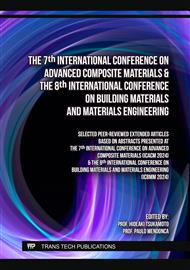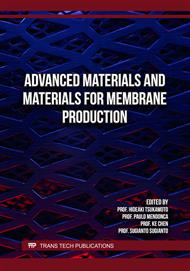p.57
p.67
p.73
p.81
p.87
p.93
p.101
p.111
p.117
Substitution of River Sand with Fly Ash in Self-Compacting Concrete by Utilizing Novel Admixture
Abstract:
This study investigates the substitution of river sand with respect to fly ash in self-compacting concrete (SCC) and its performance on workability, strength, and durability. Various mix designs were assessed through L-box, V-funnel and slump cone test to determine fresh concrete properties. The results indicated that higher fly ash content significantly improved the passing and filling abilities of SCC, as evidenced by increased L-box blocking ratios and larger slump flow measurements, albeit with a higher segregation tendency. The mix with 75% fly ash and 25% river sand (FA75-RS25) demonstrated the best overall performance, showing superior passing ability (L-box ratio of 0.87), excellent filling ability (slump flow of 700 mm), and acceptable segregation resistance. This mix also achieved the highest split tensile, flexural, and compressive strengths, outperforming the control mix (FA00-RS100). Flexural strength results for the FA75-RS25 mix showed significant improvements over time, with values of 7.67 MPa at 28 days, 10.33 MPa at 56 days, and 11.17 MPa at 90 days, compared to the control mix which achieved 5.83 MPa, 7.50 MPa, and 8.17 MPa, respectively. These findings underscore the potential of fly ash as a viable and sustainable substitute for river sand in SCC, enhancing performance and supporting sustainable construction practices. Further research is recommended to explore additional mechanical properties and long-term durability aspects of fly ash-incorporated SCC.
Info:
Periodical:
Pages:
111-116
Citation:
Online since:
December 2024
Authors:
Price:
Сopyright:
© 2024 Trans Tech Publications Ltd. All Rights Reserved
Share:
Citation:



